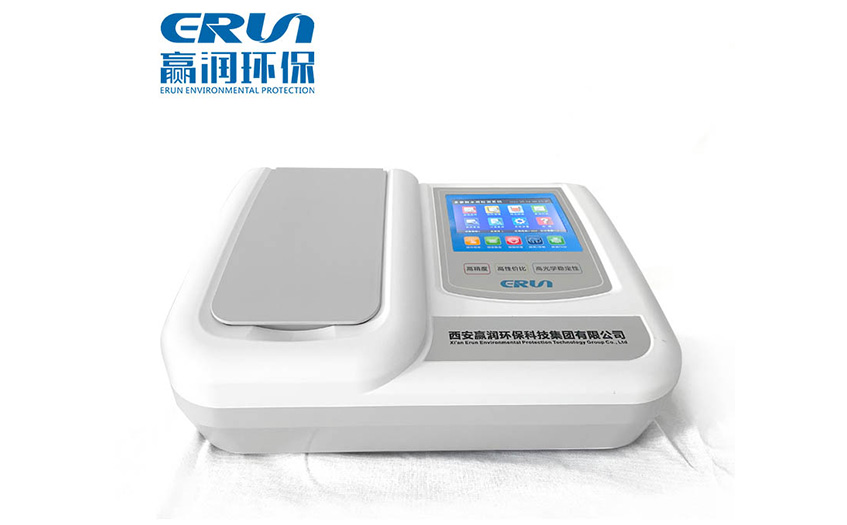Water quality testing instruments play a vital role in ensuring the safety and health of water resources. Among them, desktop water quality testing instruments are widely used in laboratories, sewage treatment plants, agriculture, aquaculture, drinking water testing and other fields due to their precision and multifunctionality.This article will focus on the detection methods, detection parameters and application scenarios of desktop water quality testing instruments.If you need detailed information and quotes on the products, please contact customer service directly or call us. Erun Environmental Protection Group customer service is always at your service.

Ⅰ.Detection parameters
The desktop water quality testing instrument can detect a variety of water quality parameters, including but not limited to:
1.COD (Chemical Oxygen Demand): An important indicator to measure the degree of organic pollution in water.
2.Ammonia nitrogen: reflects the degree of water pollution by nitrogen-containing organic matter and is toxic to aquatic organisms.
3.Total phosphorus: the total amount of phosphorus in water. Too high a level can lead to eutrophication of the water.
4.Nitrite: Excessive nitrite content in water may be harmful to human health.
5.Residual chlorine: used to evaluate the disinfection effect of water bodies. Too high or too low residual chlorine content is not conducive to water quality safety.
6.Nitrate nitrogen: The content of nitrate nitrogen in water bodies is related to agricultural and industrial pollution.
7.Turbidity: reflects the amount of suspended matter and colloidal impurities in water and is an important indicator for measuring the degree of water pollution.
8.Chroma: The color of natural water or polluted water, which mainly comes from substances dissolved in the water.
Ⅱ.Detection Method
1.Instrument preparation
Make sure the desktop water quality testing instrument is in a stable working environment, connect the power supply, and turn on the instrument to preheat to a stable state.
Prepare the corresponding reagents and standard solutions according to the parameters to be tested.
2.Sample collection and processing
Use clean sampling containers to collect water samples to avoid contamination.
Depending on the requirements of different parameters, water samples may need to be pre-treated, such as filtration, dilution, etc.
3.Instrument Operation
Pour the treated water sample into the measuring container specified by the instrument.
According to the instrument operation manual, select the corresponding measurement parameters and set the measurement conditions (such as digestion temperature, time, etc.).
Start the measurement program, the instrument will automatically analyze the sample and display the measurement results on the display.
4.Data recording and analysis
Record the measurement results and compare them with standard values or historical data to evaluate water quality.
If needed, data can be exported to a computer or printer for further analysis and report writing.
Ⅲ.Application Scenario
1.Sewage treatment plants and industrial wastewater treatment
In sewage treatment plants and industrial wastewater treatment, desktop water quality testing instruments are used to monitor effluent quality to ensure that discharge standards are met. By quickly testing the content of pollutants such as COD, ammonia nitrogen, and total phosphorus in water, data support is provided for the optimization of treatment processes.
2.Agriculture and Aquaculture
In agricultural irrigation and aquaculture, water quality directly affects the growth of crops and the health of fish. Desktop water quality testing instruments can detect parameters such as dissolved oxygen and ammonia nitrogen in water, provide nutrient content data for agricultural irrigation, and provide a suitable living environment for aquaculture.
3.Drinking water testing and swimming pool water quality management
The quality of drinking water is directly related to people's health, and the content of harmful substances in it must be strictly controlled. Desktop water quality testing instruments can quickly detect harmful substances such as bacteria and organophosphorus pesticides in drinking water to ensure the safety of drinking water.In swimming pool water quality management, the instrument can detect the residual chlorine content to ensure that the pool water meets the disinfection requirements and protect the health and safety of swimmers.
4.Scientific research laboratories and university teaching and research
Laboratories and universities need to conduct various water quality research and analysis experiments. Desktop water quality testing instruments provide reliable data support for research work with their accurate and fast testing capabilities.
Ⅳ.Summarize
Desktop water quality testing instruments play an important role in many fields with their multifunctional and high-precision characteristics. Mastering their testing parameters, testing methods and application scenarios is of great significance for ensuring water quality safety and promoting the rational use of water resources. With the continuous development of science and technology, it is believed that desktop water quality testing instruments will be used in more fields, bringing more convenience and benefits to people's lives and production.